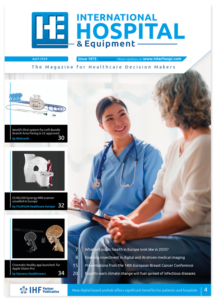IV iron in early pregnancy proves safe and effective for anaemia treatment
A landmark clinical trial conducted across multiple sites in India has demonstrated that administering intravenous iron during early second trimester pregnancy is both safe and effective for treating iron deficiency anaemia, potentially changing current treatment protocols globally.
Treatment timing proves critical
The extensive study, involving 4,368 participants, represents one of the largest investigations into intravenous iron administration during pregnancy. According to lead researcher Dr Richard Derman from Thomas Jefferson University, India was strategically chosen due to its high prevalence of anaemia among pregnant women.
Current guidelines typically recommend oral iron supplementation as first-line treatment, with intravenous iron reserved for persistent cases in the third trimester. However, this new research challenges this approach by demonstrating benefits of earlier intervention.
Study design and outcomes
The trial randomised participants with moderate anaemia and iron deficiency before 17 weeks’ gestation into three groups: one receiving standard oral iron supplementation, and two others receiving single-dose infusions of different IV iron formulations – ferric carboxymaltose (FCM) and ferric derisomaltose (FDM).
Dr Rupsa C. Boelig, maternal-fetal medicine subspecialist at Thomas Jefferson University, emphasises the study’s unique early intervention approach: “Iron requirements increase dramatically during pregnancy. An additional 1 gram of iron is required for the developing fetus, and for placental storage. Such requirements increased dramatically during the second and trimester, so it’s much more difficult to catch-up if you’re intervening in the third trimester.”
Significant findings for maternal and infant health
While all treatment groups achieved similar rates of non-anaemic status by delivery, the IV iron cohorts demonstrated significantly lower requirements for additional non-study IV iron or blood transfusions before delivery. Notably, the FCM group showed reduced incidence of low birthweight infants compared to those receiving oral iron.
Professor Mrutyunjaya B. Bellad from KLE Academy of Higher Education and Research notes: “From this trial it is evident that single dose IV iron preparations are safe and easy to administer under proper supervision and facilities in order to treat anemia in pregnancy.”
Global implications for antenatal care
The World Health Organization estimates that anaemia affects approximately 37 percent of pregnant individuals globally, with iron deficiency being the primary cause. This condition is associated with increased risks of premature labour, haemorrhage, and in severe cases, maternal mortality. Additionally, maternal iron deficiency can have lasting implications for infant health and development.
The researchers conclude that these findings support revising clinical guidelines to consider single-dose IV iron as a primary treatment option for moderate anaemia due to iron deficiency during pregnancy, particularly in early gestation.
This research was presented at the Society for Maternal-Fetal Medicine’s annual meeting and the abstract was published in the January 2025 issue of Pregnancy. The full article was still scheduled for publication in the American Journal of Obstetrics and Gynecology at the time of this news publication.


